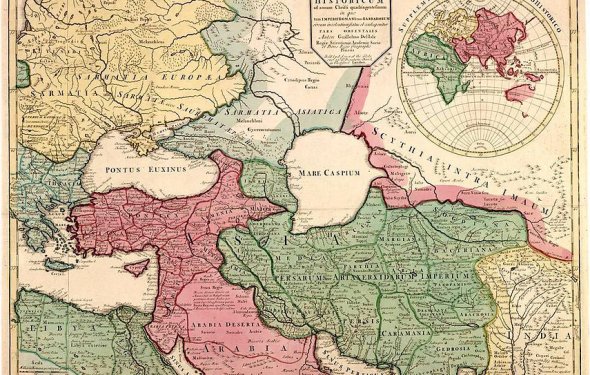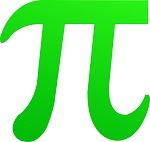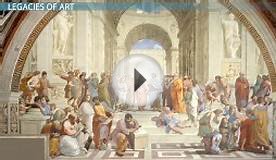Science Ancient Greece


Ancient Greek Science
In the Hellenistic Age of Ancient Greece, science became a major topic of study. The Hellenistic Age of Greece was a time when Greek culture spread throughout Persia and North Africa, including Egypt. When the Greek culture spread into a different culture, some parts of both of the cultures mixed together. This was called cross-fertilization. Because of this, a lot of advancements in culture were made in the area of science.
The Greeks had a long tradition of rational inquiry, or using their intelligence to make reason out of things. An example of this is the Greek’s rich history of philosophy. East Asia and Persia had an even longer history of rational inquiry, especially in the study of mathematics and science.
When these two cultures cross-cultivated, or mixed, great thinkers were able to join together and advance science. Other things that helped science advance were the use of Greek as an international language: almost everyone in the Hellenistic world spoke Greek. The Museum in Alexandria also helped advance science because it was a meeting point where Greeks and other scientists and thinkers could get together and share their ideas.

This time was called:
The Golden Age of Science
Euclid: Living in about 300 BC, Euclid wrote a book that is still used as the basis for the study of plane geometry. This is a type of geometry where math is used to study shapes. The basis of Euclid’s geometry was to prove one thing, and then base the rest of the study of shapes off of the basic proof. He used proofs to prove his ideas about geometry, all based off of the proof that the shortest distance between two points is a straight line. Euclid is still the most widely read Greek author.
Archimedes: One of the greatest mathematicians of all time was Archimedes. He calculated the value of pi, which was a geometrical calculation that helped determine the width, or circumference, of a circle. He also developed a system for writing down very large numbers and discovered ratios of volumes of spheres and cylinders.
Archimedes also studies physics, which is a science about energy and the way things move. He discovered new physics laws about the way things sink in water, lever systems, and water screws. In 212 BC, while his city was being attacked by the Romans, he invented engines to help fight them off. He was killed in the same battle when a Roman soldier murdered him as he was drawing a mathematical figure in the sand.
Aristarchus: Both a mathematician and an astronomer, Aristarchus discovered new theories about the way the planets move in their orbits. Aristarchus thought that even though the earth revolved around the sun, it also spun on its own axis, or spin-point, as it followed its orbit around the sun. His theories were not proven right until almost two thousand years later!
Hipparchus and Erastothenes: Two of the major thinkers in the measurement of time and distance were Hipparchus and Erastothenes. The length of the month that Hipparchus discovered is only one second off from the length that we use today. Erastothenes determined that the circumference of (the distance around) the earth was 28, 000 miles, which is only three thousand miles more than what we know today.
Greek scientists, mathematicians, and astronomers made great advancements in rational thought in the Hellenistic Age. Not only did their ideas change the ways that people thought thousands of years ago, but many of their ideas form the basis of our scientific and mathematical study today.


 Greece /ˈɡriːs/ (Greek: Ελλάδα, Ellada, IPA: [eˈlaða] ( listen) historically in Katharevousa and Ancient Greek: Ἑλλάς, Hellas, IPA: [eˈlas] and [helːás] respectively), officially the Hellenic Republic (Ελληνική Δημοκρατία, Elliniki Dimokratia, IPA: [eliniˈci ðimokraˈtia]), is a country in Southern Europe, politically considered part of Western...
Greece /ˈɡriːs/ (Greek: Ελλάδα, Ellada, IPA: [eˈlaða] ( listen) historically in Katharevousa and Ancient Greek: Ἑλλάς, Hellas, IPA: [eˈlas] and [helːás] respectively), officially the Hellenic Republic (Ελληνική Δημοκρατία, Elliniki Dimokratia, IPA: [eliniˈci ðimokraˈtia]), is a country in Southern Europe, politically considered part of Western...
 Geography (from Greek γεωγραφία, geographia, lit. "earth describe-write") is the science that studies the lands, the features, the inhabitants, and the phenomena of the Earth. A literal translation would be "to describe or write about the Earth". The first person to use the word "geography" was Eratosthenes (276-194 BC). Four historical...
Geography (from Greek γεωγραφία, geographia, lit. "earth describe-write") is the science that studies the lands, the features, the inhabitants, and the phenomena of the Earth. A literal translation would be "to describe or write about the Earth". The first person to use the word "geography" was Eratosthenes (276-194 BC). Four historical...